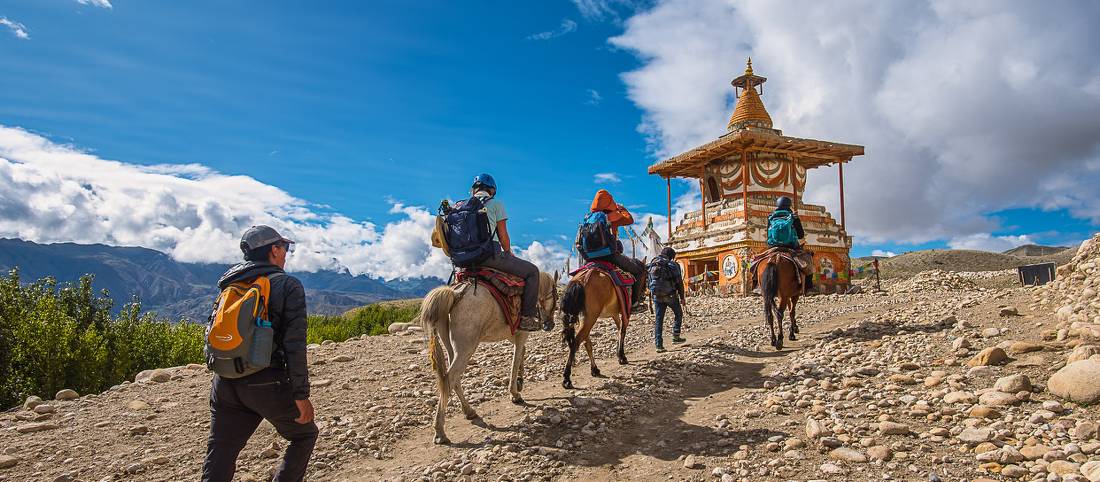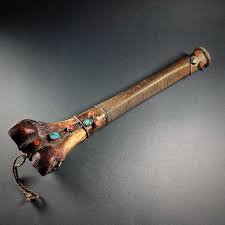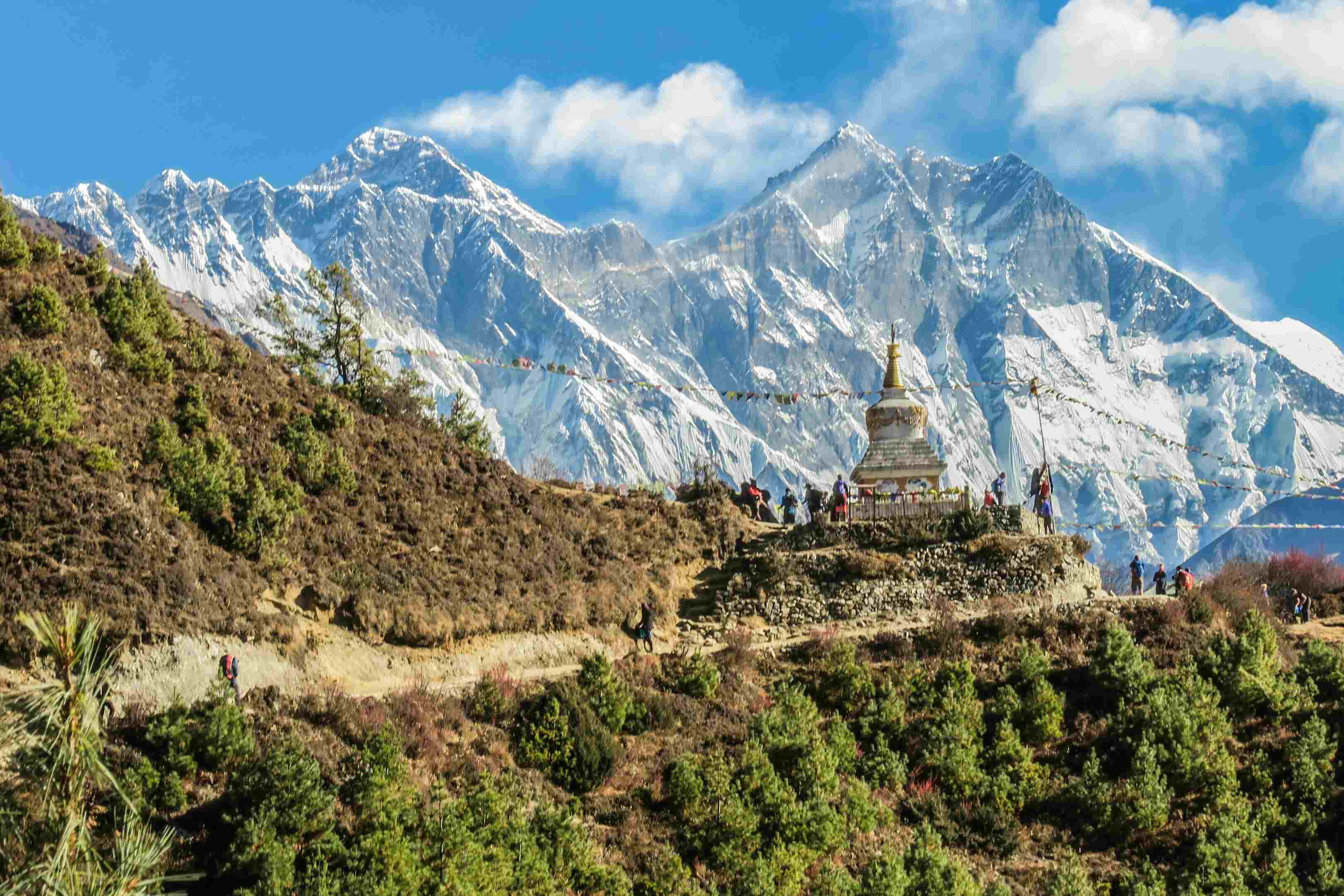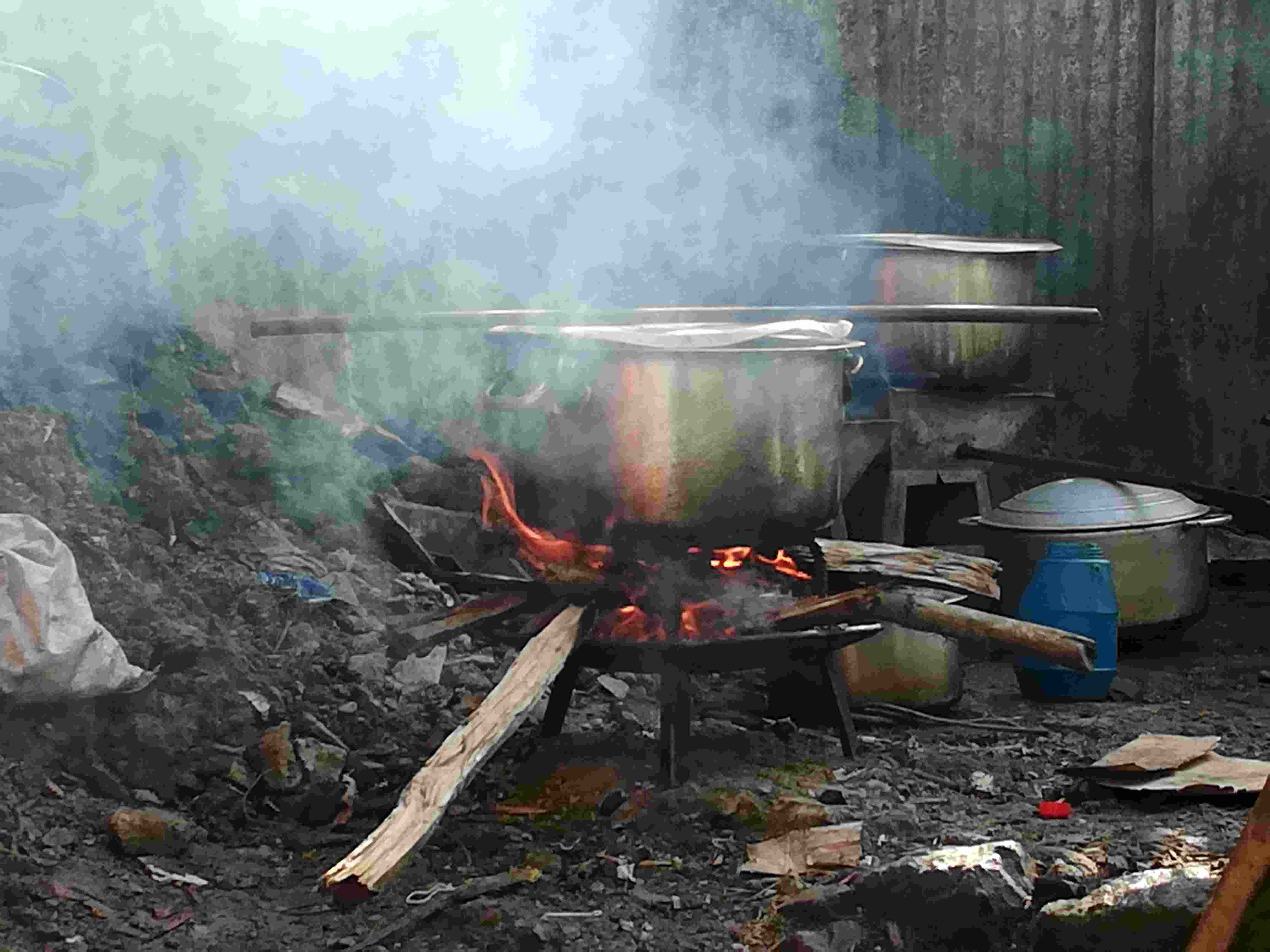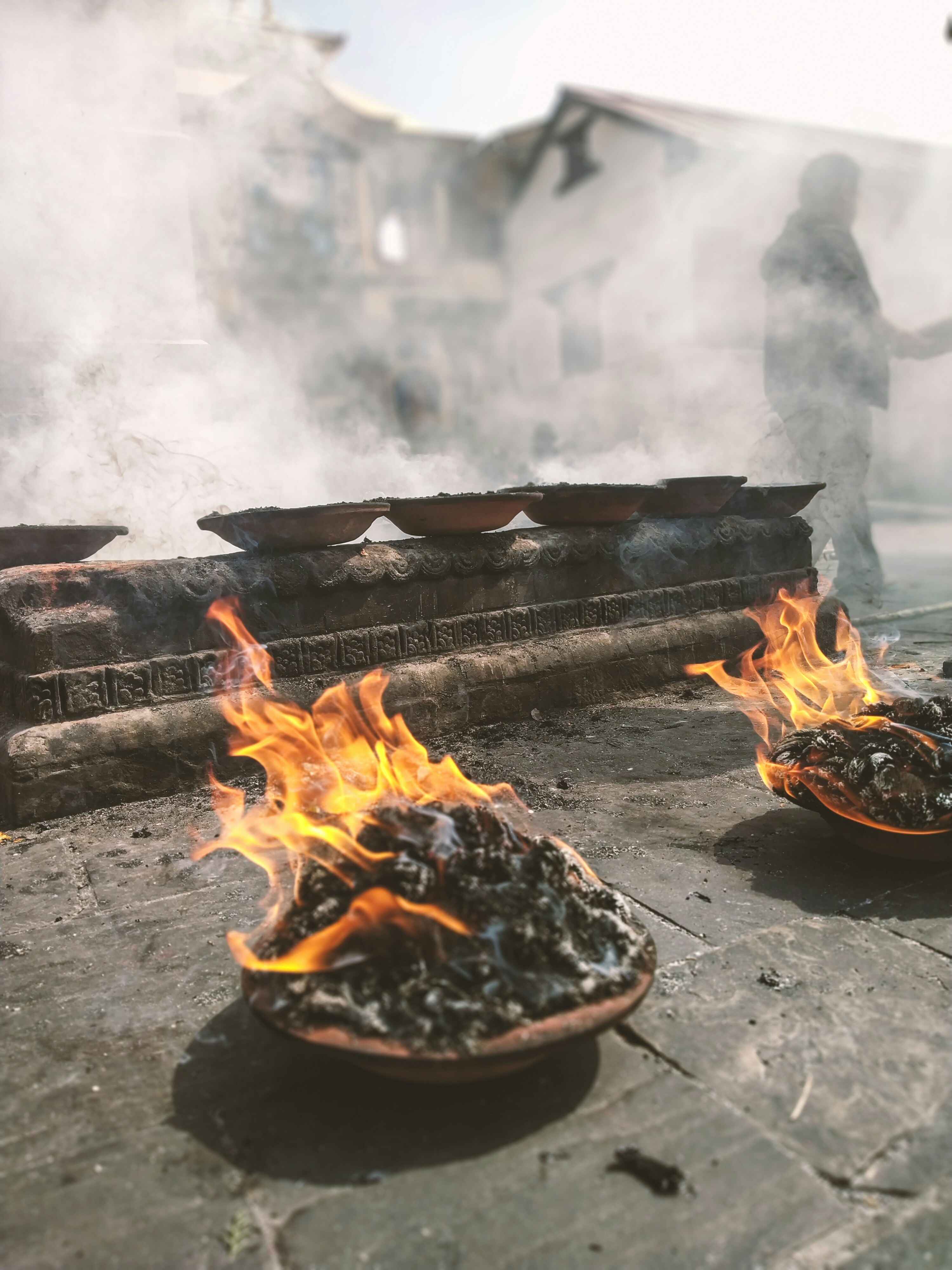Share this Article
Mustang, a remote and isolated region of Nepal, is a land of extraordinary landscapes, rich history, and deep-rooted cultural heritage nestled in the Himalayas. Mustang is often referred to as the "Last Forbidden Kingdom" due to its long period of restricted access to outsiders. It is divided into two parts: Upper Mustang and Lower Mustang, each offering unique experiences and attractions.
The allure of Mustang lies in its untouched beauty, spiritual ambiance and its deep ties to Tibetan culture. Over the years, Mustang has become a favored destination for trekkers, adventurers and culture enthusiasts who wish to experience something beyond the typical tourist trails beyond the picturesque landscapes and ancient monasteries, Mustang is home to a resilient community of people, primarily Sherpas and Tibetan descendants, who have preserved their traditions for centuries.
The People and Culture of Mustang
The inhabitants of Mustang, known as the Loba people, share close cultural and ethnic ties with Tibetans, many of them are followers of Tibetan Buddhism and adhere to traditional ways of life. Sherpas, who are well-known for their expertise in high-altitude mountaineering, also reside in some parts of Mustang. The people of Mustang rely on agriculture, animal husbandry and trade, with yaks, goats and sheep playing a crucial role in their livelihoods. Yaks, in particular, are essential to the Mustang way of life, providing transportation, milk, wool, and even fuel in the form of dried dung.
The culture of Mustang is deeply intertwined with Buddhism, evident in the numerous monasteries, prayer wheels, and colorful prayer flags adorning the region. Festivals such as the Tiji Festival bring the community together in grand celebrations featuring masked dances and traditional rituals. The Tibetan-influenced architecture with whitewashed houses and intricately carved wooden windows adds to the region’s charm.
Geographical and Historical Significance
Mustang lies in the rain shadow of the Annapurna and Dhaulagiri ranges, making it one of the driest regions in Nepal. The terrain is dominated by rugged cliffs, deep gorges and arid landscapes, creating a surreal environment that stands in contrast to the lush greenery found in other parts of Nepal. The region experiences a cold desert climate, with strong winds sweeping across its vast, barren land due to its unique location, Mustang is accessible throughout the year, unlike other trekking destinations in Nepal, which remain closed during the monsoon season.
Historically, Mustang was part of the ancient Tibetan kingdom and still retains strong Tibetan Buddhist influences. The Kingdom of Lo, as it was historically known, played a crucial role in the trans-Himalayan trade route, facilitating commerce between Tibet and Nepal even after Nepal annexed Mustang in the 18th century, the region continued to function autonomously under the rule of its king until 2008, when Nepal abolished its monarchy.
What Mustang Contains
Mustang is a treasure trove of cultural, historical, and natural wonders. Some of the key highlights include:
1. Lo Manthang: The Walled City
Lo Manthang, the capital of Upper Mustang, is a medieval fortress city with narrow alleys, ancient monasteries and traditional Tibetan-style houses. The city was founded in the 14th century and served as the seat of the Mustang kings. The royal palace of Mustang, a four-story structure made of mud bricks, stands as a symbol of the region’s rich history and the legacy of the Mustang kings.
Lo Manthang is also home to several significant monasteries, including Thubchen Gompa, Jampa Gompa, and Chode Gompa. These monasteries house centuries-old murals, Buddhist scriptures, and artifacts, offering insights into the region’s religious heritage.
2. Muktinath Temple
Located in Lower Mustang, Muktinath is a sacred pilgrimage site for both Hindus and Buddhists. The temple is dedicated to Lord Vishnu and is believed to be a place of salvation. According to Hindu mythology, taking a holy bath in the 108 water spouts surrounding the temple washes away sins and leads to liberation from the cycle of birth and rebirth.
For Buddhists, Muktinath is associated with Guru Rinpoche (Padmasambhava), the founder of Tibetan Buddhism; many Tibetan Buddhist pilgrims visit the temple to pay homage to Avalokiteshvara, the Bodhisattva of Compassion. The temple’s eternal flame, which burns continuously due to natural gas emissions, is considered a sacred element of worship.
3. The Caves of Mustang
Mustang is famous for its mysterious sky caves, which are carved into the cliffs and date back over 2,000 years. These caves contain ancient murals, manuscripts and human remains, providing insights into the region’s early civilization and Buddhist practices. Some of the most famous cave systems include the Luri Gompa, Chungsi Cave, and the Jhong Cave.
Archaeologists have uncovered hidden relics and secret manuscripts inside these caves, shedding light on ancient Himalayan civilizations. The caves remain an enigma, with many still unexplored due to their remote locations and difficult access.
4. Kagbeni: Gateway to Upper Mustang
Kagbeni is a picturesque village located at the entrance to Upper Mustang. It serves as a checkpoint for travelers heading to the restricted areas and is known for its stunning landscapes, medieval structures and the Kag Chode Thupten Samphel Ling Monastery. The village is located at the confluence of the Kali Gandaki and Jhong rivers, making it a crucial stop for trekkers and pilgrims alike.
Kagbeni is also the starting point for those following the ancient salt trading route, which connected Nepal with Tibet. The village maintains its traditional charm, with stone-paved streets, mud-brick houses, and stunning views of the surrounding mountains.
5. Tiji Festival
It is believed to commemorate a historical event where a deity defeated a demon causing destructOne of the most spectacular events in Mustang is the Tiji Festival, a three-day annual celebration held in Lo Manthang. The festival features vibrant mask dances and rituals performed by Buddhist monks, symbolizing the triumph of good over evil. Tiji, which stands for "Tenpa Chirim,"is believed to commemorate a historical event where a deity defeated a demon causing destruction in the region.
The festival attracts visitors from all over the world, providing a unique opportunity to witness traditional Mustang culture, religious ceremonies, and an unmatched festive atmosphere. The colorful costumes, sacred dances, and Buddhist chants create an otherworldly experience for attendees.
Why Visit Mustang?
Mustang is more than just a travel destination it is an experience that leaves an indelible mark on anyone who visits. This remote region of Nepal is a place where time seems to stand still, where ancient traditions thrive, and where nature’s raw beauty is on full display from its rich Tibetan-influenced culture to its breathtaking Himalayan landscapes, Mustang offers countless reasons to explore its wonders.
1. Unparalleled Trekking Routes
For trekking enthusiasts, Mustang is a dream destination unlike the lush green forests of the Annapurna Circuit, Mustang’s arid desert-like terrain offers a unique and surreal trekking experience. The Upper Mustang Trek is among the most sought-after trails, taking travelers through dramatic gorges, ancient caves, and walled Tibetan-style villages. The trek to Lo Manthang, the heart of Upper Mustang, is an unforgettable journey through barren landscapes contrasted by vibrant prayer flags and centuries-old monasteries.
Additionally, Mustang’s location in the rain shadow of the Himalayas makes it an ideal trekking destination year-round, unlike other trekking routes in Nepal, which often close during the monsoon season.
2. A Deep Dive into Rich Cultural Heritage
Mustang’s cultural heritage is unlike any other in Nepal. This isolated region has retained its Tibetan roots, making it one of the last places where traditional Tibetan Buddhist customs and lifestyles are still fully preserved.
Visitors can explore ancient monasteries, such as the 15th-century Thubchen Gompa and Jampa Gompa, which are adorned with intricate murals and Buddhist relics. The region’s whitewashed houses with intricately carved wooden windows, traditional chortens, and prayer wheels add to the timeless charm of Mustang.
Meeting the Loba people, who have maintained their ancient customs, provides insight into a way of life that has changed little over the centuries. Their warm hospitality and deep spiritual connection to the land make every traveler feel like they’ve stepped into a different era.
3. Spiritual Exploration and Pilgrimage
Mustang is a deeply spiritual land, with Buddhist monasteries, prayer flags fluttering in the wind and sacred caves dotting its landscape. Muktinath, one of the most revered pilgrimage sites for both Hindus and Buddhists, attracts thousands of visitors each year.
For Hindus, Muktinath is believed to be the place where salvation can be attained, while Buddhists see it as an important site associated with Guru Rinpoche (Padmasambhava). The temple complex’s 108 water spouts, sacred eternal flame, and peaceful surroundings make it an ideal place for spiritual seekers.
For those interested in meditation and self-discovery, Mustang offers a tranquil escape from the distractions of modern life, allowing for deep introspection and connection with nature.
4. Witness the Unique Tiji Festival
The Tiji Festival is one of Mustang’s most mesmerizing cultural events. Held in Lo Manthang, this three day festival reenacts the story of a deity who saved Mustang from a demon that brought chaos to the land.
The festival features vibrant masked dances, ancient Buddhist rituals, and performances that depict the victory of good over evil. The atmosphere is electrifying, with monks in elaborate costumes, traditional Tibetan music, and the entire community coming together to celebrate.
Attending the Tiji Festival is a rare opportunity to witness Mustang’s ancient traditions come to life in a colorful and deeply spiritual setting.
5. Explore the Mysterious Sky Caves
Mustang is home to an estimated 10,000 man-made caves, many of which remain unexplored. These caves carved into the cliffs contain remnants of ancient civilizations, including Buddhist murals, manuscripts and even human remains dating back over 2,000 years.
Some of the most famous cave complexes, such as Luri Gompa and Chungsi Cave, reveal insights into Mustang’s past, where monks once meditated in solitude and secret Buddhist scriptures were hidden.
Exploring these caves is like stepping into an archaeological wonderland, offering a glimpse into the hidden history of Mustang.
6. A Land of Yaks and Himalayan Wildlife
One of the most fascinating aspects of Mustang’s landscape is its connection to Himalayan wildlife. The region is home to yaks, which play a crucial role in the lives of the locals. These sturdy animals provide transportation, milk, wool, and even fuel in the form of dried dung.
In addition to yaks, the region is also home to rare wildlife species such as the elusive snow leopard, Himalayan blue sheep, and Tibetan wolves. The rugged terrain and remote valleys make Mustang a sanctuary for these creatures, offering nature enthusiasts a chance to witness them in their natural habitat.
7. Scenic Beauty and Himalayan Views
Mustang offers some of the most breathtaking landscapes in the world. From the snow-capped peaks of the Annapurna and Dhaulagiri ranges to the deep gorges of the Kali Gandaki River, the region’s beauty is nothing short of mesmerizing.
The landscape is ever-changing—from red rock cliffs and barren deserts to hidden oasis-like villages, every turn in Mustang presents a new and stunning view. Sunrise and sunset over the Mustang valleys are unforgettable experiences, casting golden hues over the rugged terrain.
For photographers and nature lovers, Mustang is a paradise waiting to be captured.
8. A Journey Back in Time
Unlike Nepal’s more commercialized trekking regions, Mustang retains its untouched, authentic feel. Visiting Mustang is like traveling back in time, where life moves at a slower pace, and traditions remain deeply rooted with no urbanization or excessive modernization, the charm of Mustang lies in its simplicity walking through its ancient villages, hearing the chants of monks in the monasteries and witnessing age-old traditions still being practiced make Mustang a destination that stays with travelers long after they leave.
Conclusion
Mustang remains one of the most enigmatic destinations in the world. Whether you seek spiritual enlightenment at Muktinath, wish to explore the hidden caves, or simply admire the breathtaking beauty of the Himalayas, Mustang offers an experience unlike any other. The journey to Mustang is not just a trek through rugged landscapes it is a spiritual and cultural odyssey that leaves an everlasting impression.
Categories:
Adventure Activities
Tags:
HiddenMustang
,
MysticNepal
,
UpperMustangTales
,
DesertOfTheHimalayas
,
AncientLo

